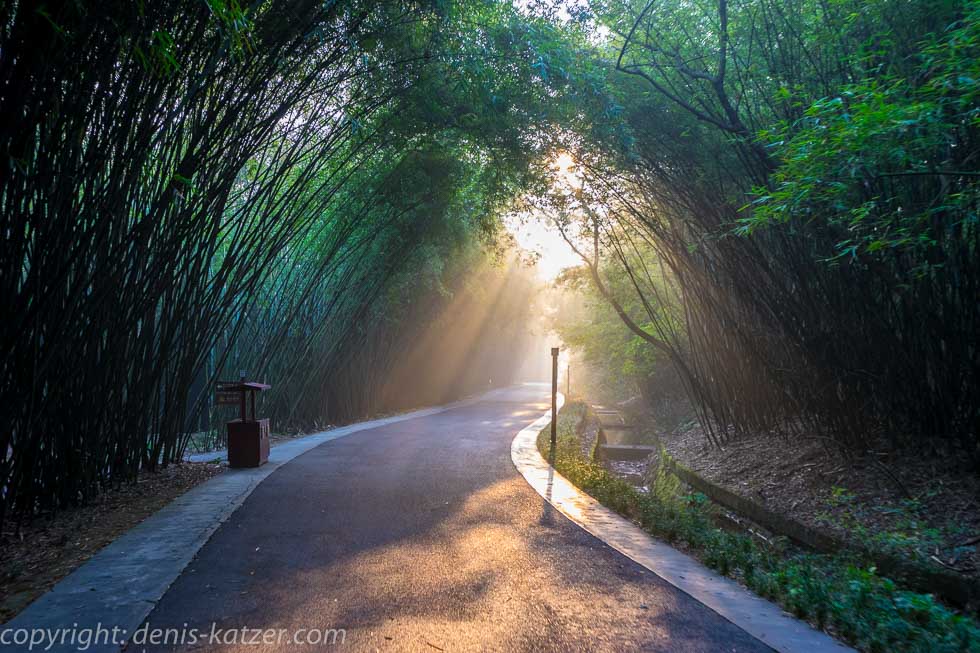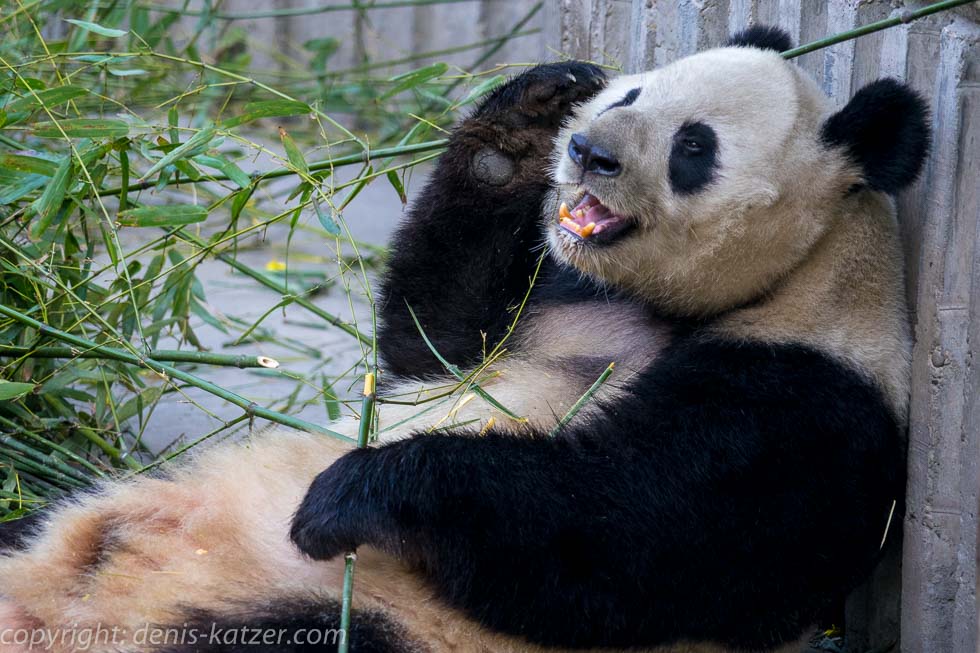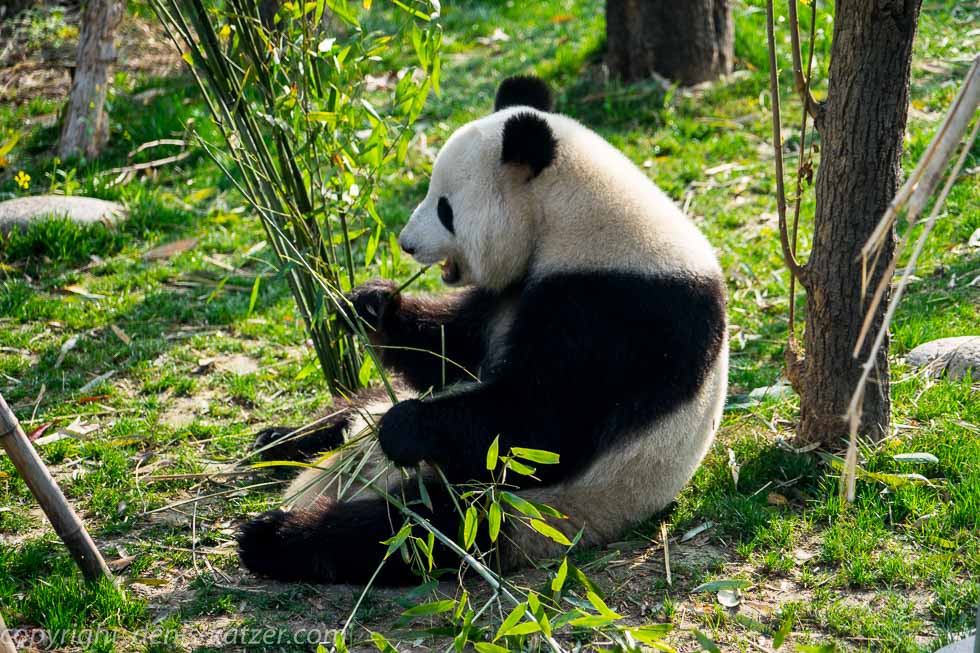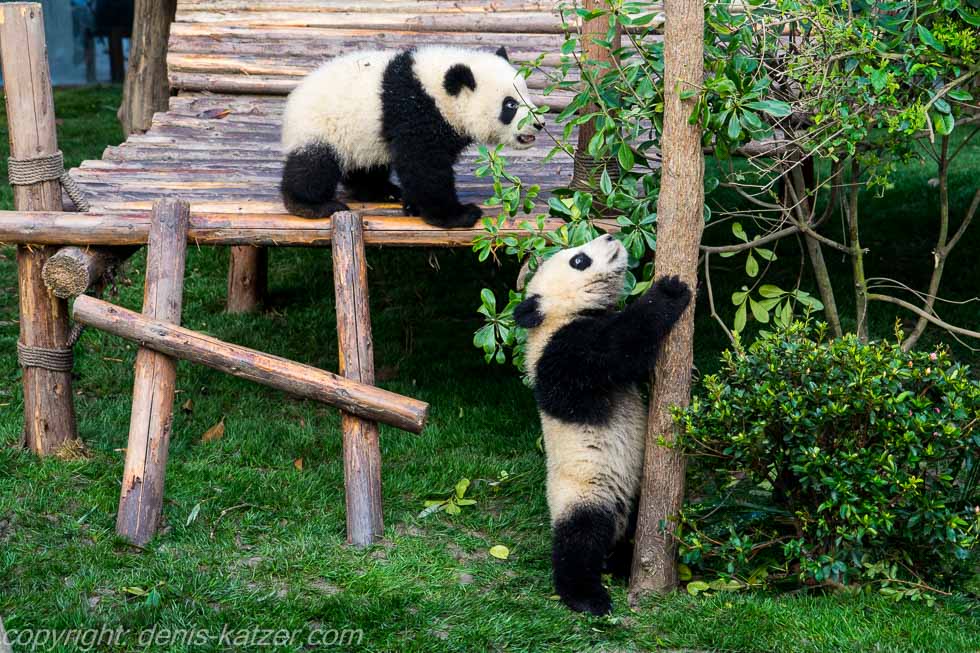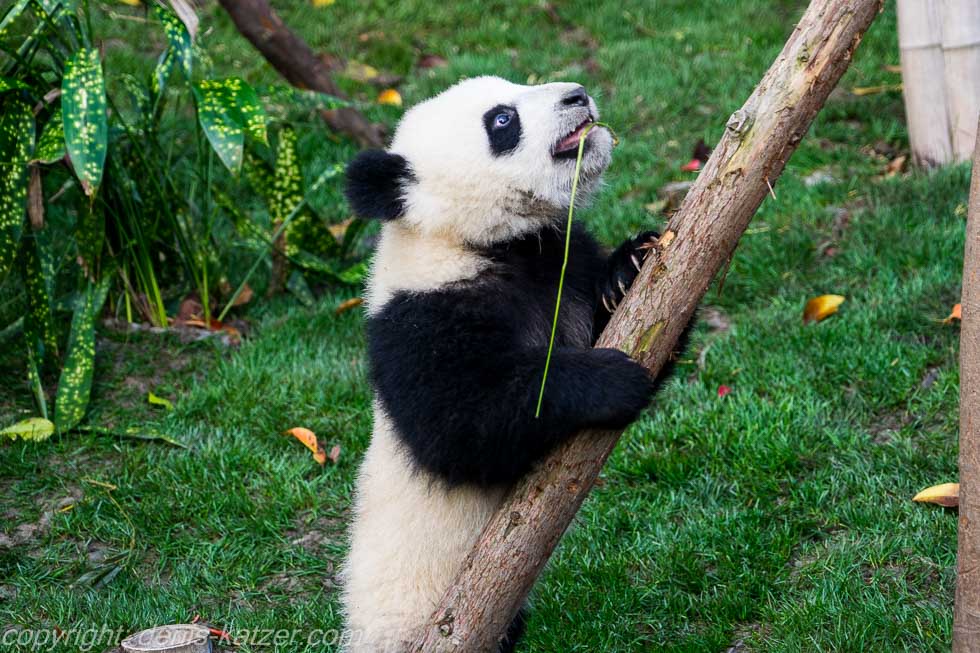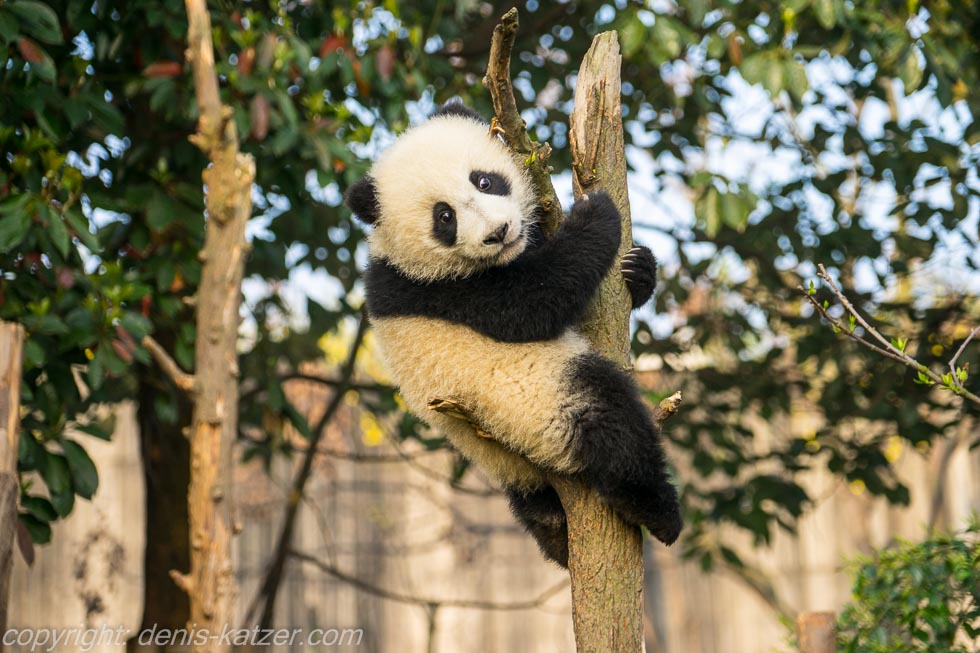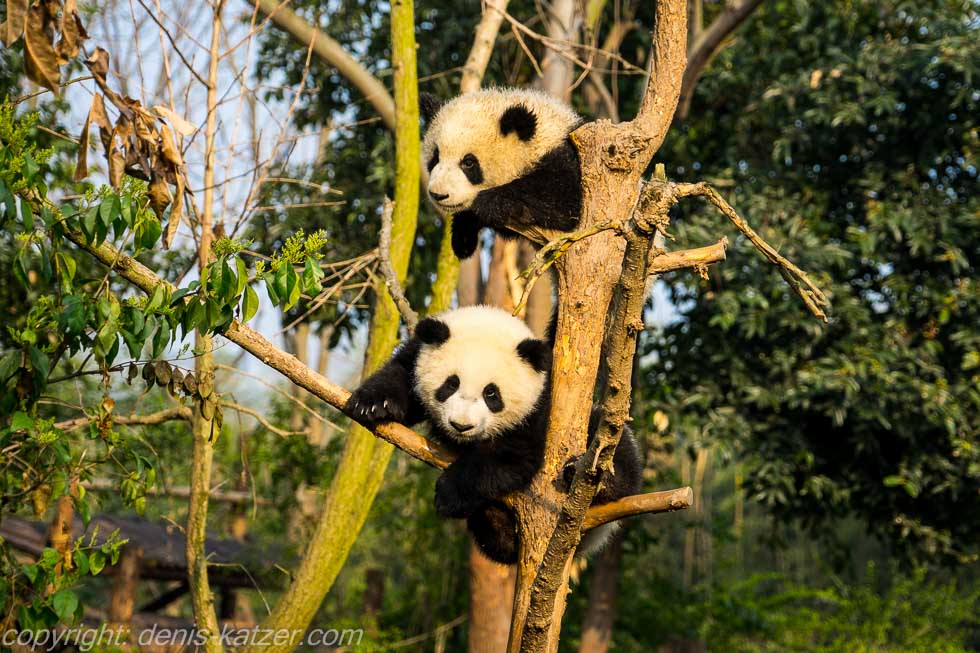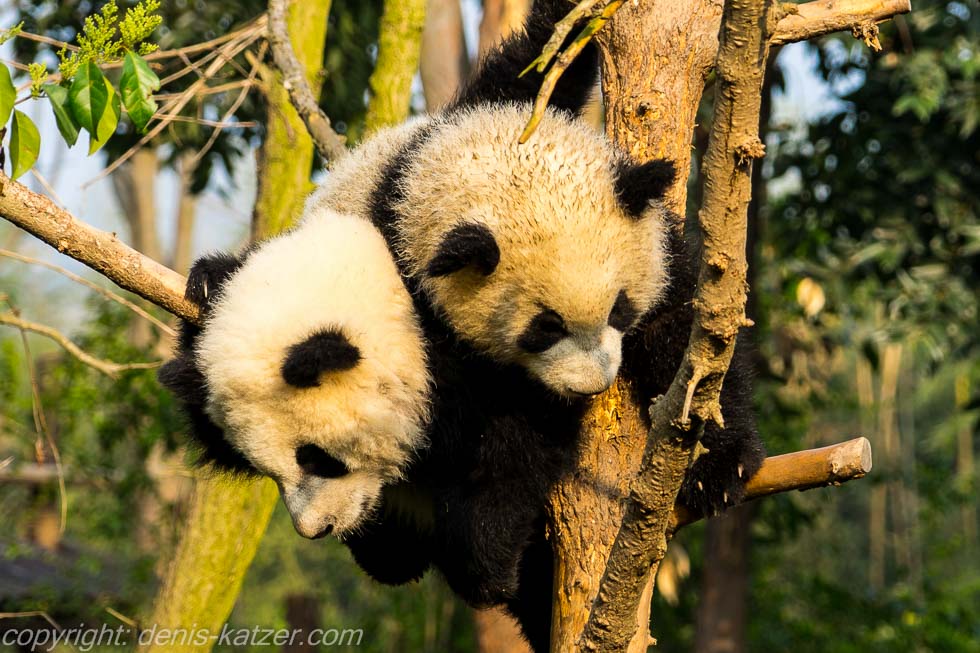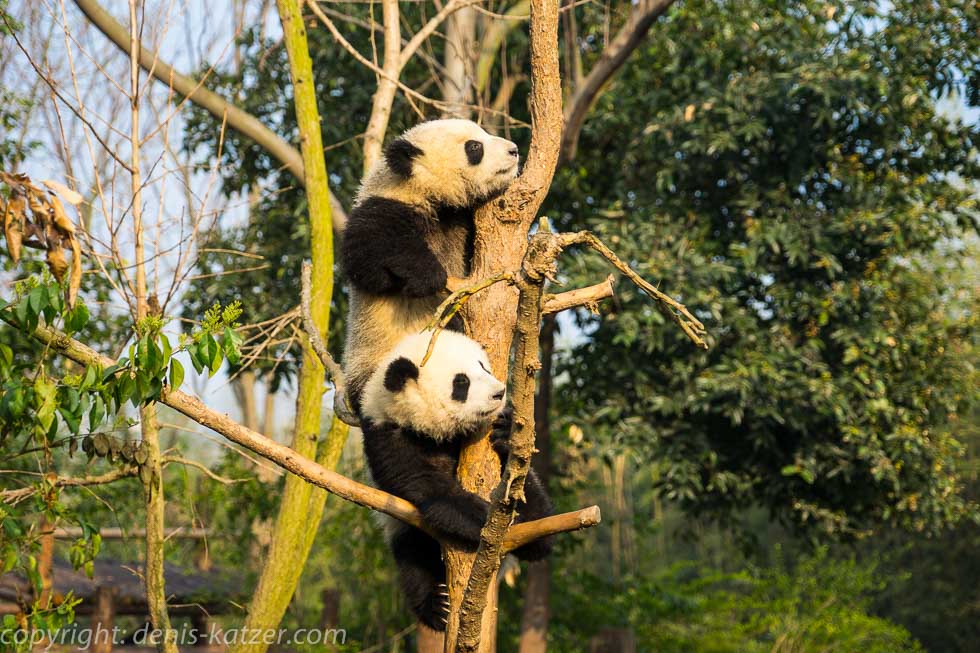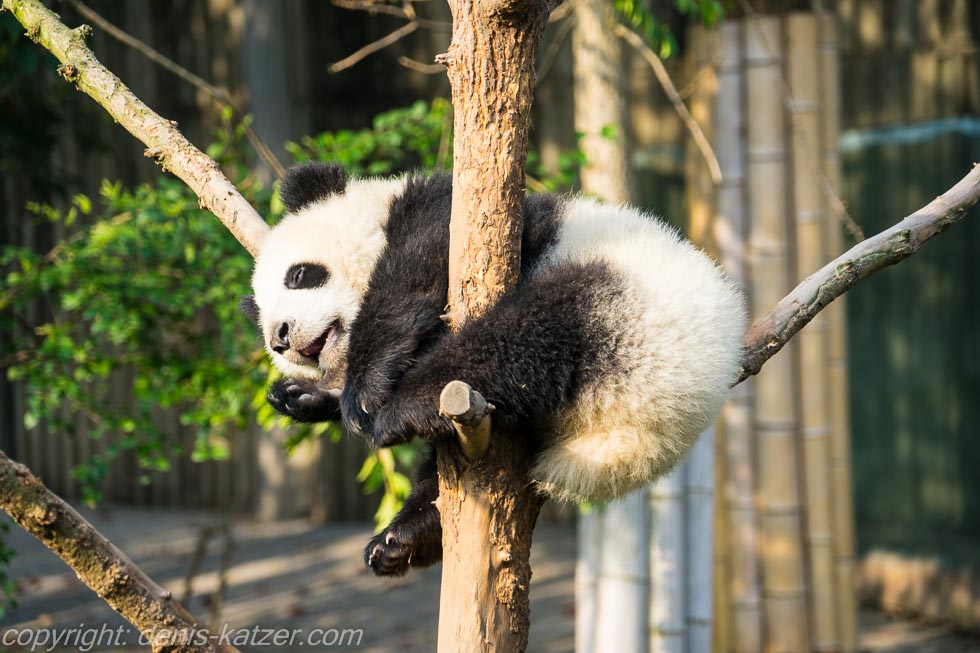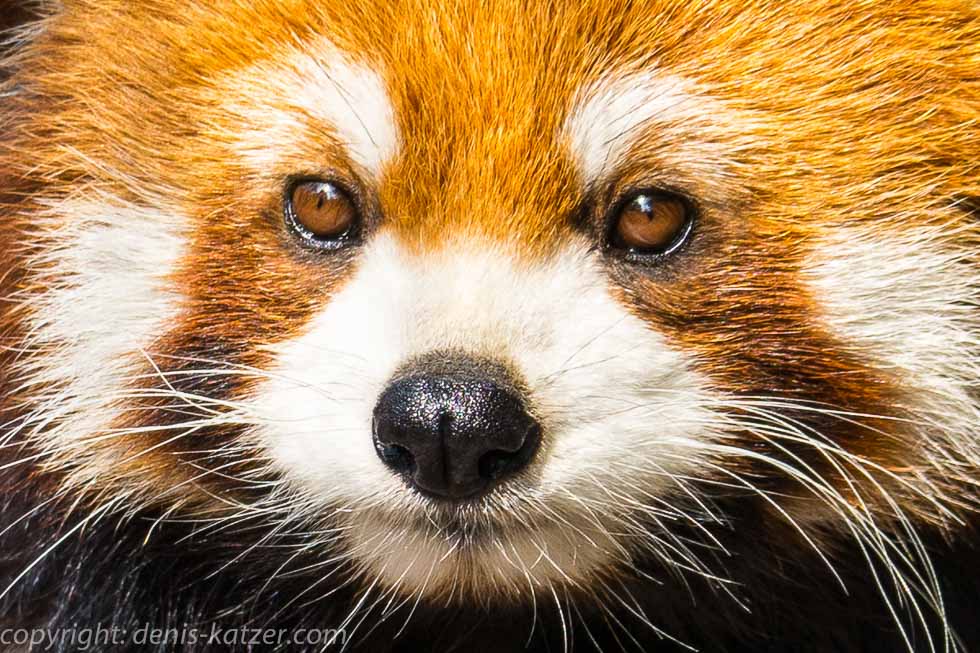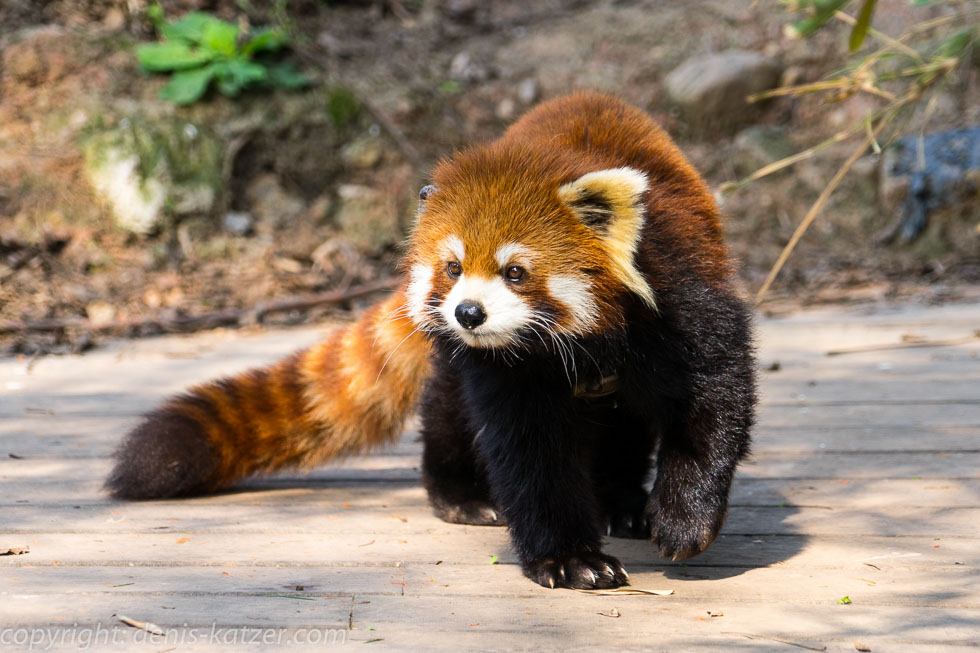
Panda bears, the national symbol of China
N 30°40'51.0'' E 104°03'23.2''
Date:
18.03.2016
Day: 264
Country:
China
Province:
Sichuan
Location:
Chengdu
Latitude N:
30°40’51.0”
Longitude E:
104°03’23.2”
Total kilometers:
15,819 km
Maximum height:
500 m
Total altitude meters:
25.392 m
Sunrise:
07:10 a.m.
Sunset:
7:13 pm
Temperature day max:
20°C
Temperature day min:
16°C
(Photos of the diary entry can be found at the end of the text).
We get up early to be one of the first to arrive at the research station for breeding giant pandas, which is famous for Chengdu. Virgin rays of sunlight penetrate the dense bamboo weave that arches over a winding path. Birds chirp incessantly and seem to be enjoying the mild spring temperatures. Together with a handful of Chinese people, we stand in front of an outdoor enclosure and observe a panda bear, which is not only the symbol of the WWF, but also the national symbol of China and one of the five mascots of the 2008 Summer Olympics in Beijing. He leans comfortably with his back against a tree and gleefully shoves kilos of bamboo stalks into his mouth. “He seems to be doing really well,” says Tanja enthusiastically. “They are treated like kings,” I reply, knowing that the Chinese government is spending a fortune to save the small population of endangered panda bears. They originally lived in large parts of eastern China and Myanmar. Due to climatic changes and the spread of humans, its habitat became limited. One of the worst threats was catching him to sell to zoos but mainly hunting him to get his coveted fur. Although poaching and the fur trade are strictly forbidden in China and are sometimes punishable by death, we saw with our own eyes how snow leopard skins were offered for sale on the street. However, at least the pandas have been protected since 1939 and in 1992 the Chinese government launched a national conservation program. As a result, around 40 reserves were established in which more than half of the estimated 1,864 panda bears now live in freedom. Founded in 1987, the Chengdu breeding station is now home to the largest artificially bred population of giant pandas in the world, with around 115 animals. The breeding station started with just six pandas that were rescued from the wild.
“Look, the little ones over there!” calls Tanja, pointing to some panda children who are romping around wildly in the green grass, wrestling with each other, boxing and climbing into trees in a dizzying height to make themselves comfortable on a branch. We enjoy our time in the beautifully designed panda station, roaming for hours through the bamboo forests, which are strange to us, and observing the red panda or cat bear, which also feeds on bamboo and is an endangered species. The park fills up more and more with every passing hour. Thousands of Chinese visitors flock there, jetting along the paths, which are still completely empty this morning, in an electric train. Despite the signs telling them to keep quiet, they shout at the pandas. “Come and look at the camera!” Park visitors jam endlessly in front of the numerous food stands and consume whatever they can. When hundreds of schoolchildren start chattering and screaming in the park, we leave as quickly as possible…
If you would like to find out more about our adventures, you can find our books under this link.
The live coverage is supported by the companies Gesat GmbH: www.gesat.com and roda computer GmbH http://roda-computer.com/ The satellite telephone Explorer 300 from Gesat and the rugged notebook Pegasus RP9 from Roda are the pillars of the transmission.

